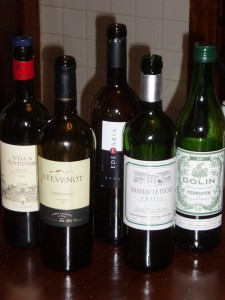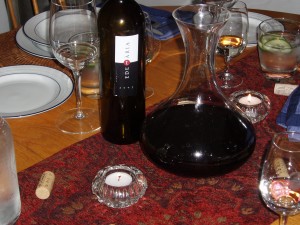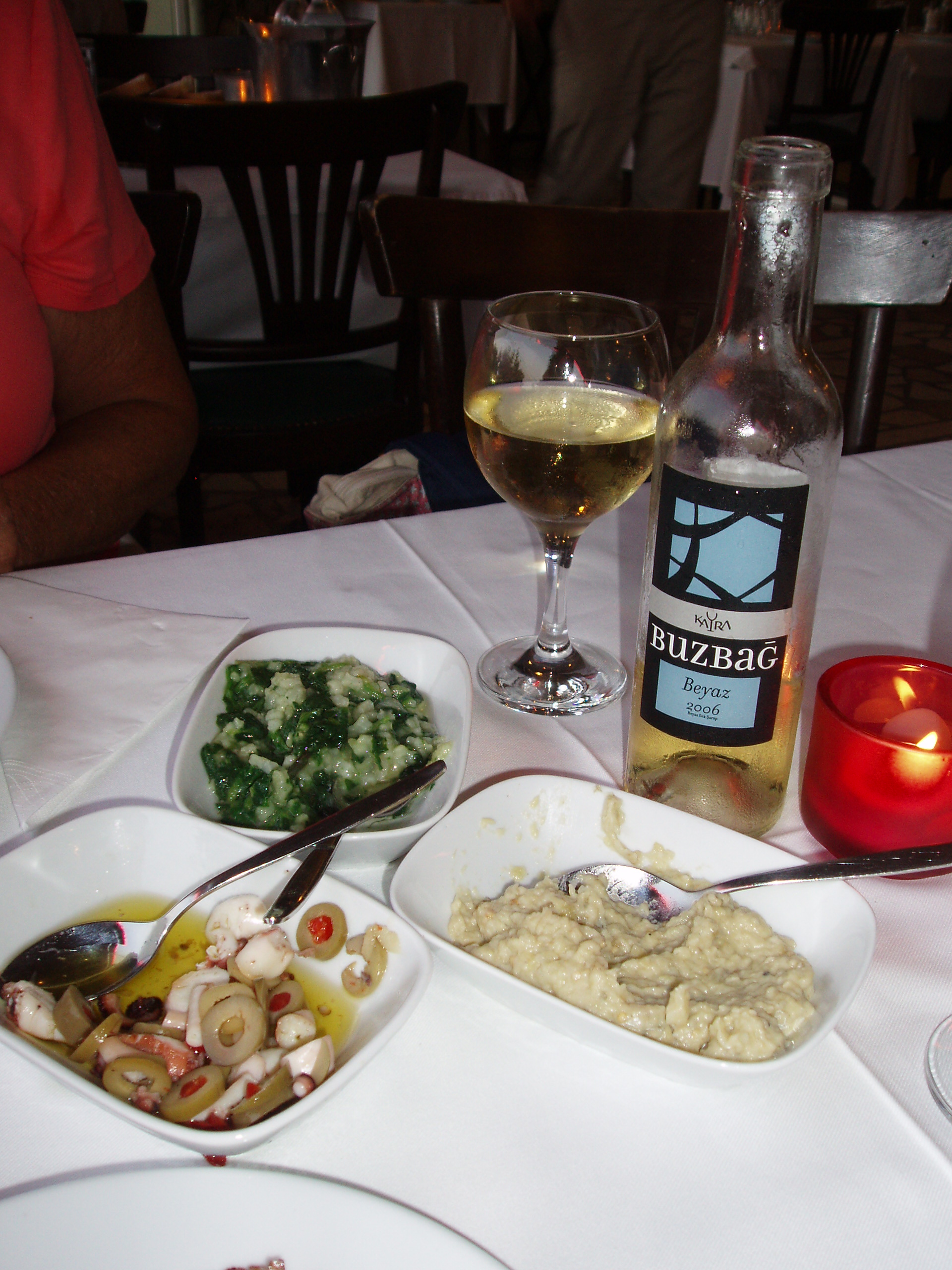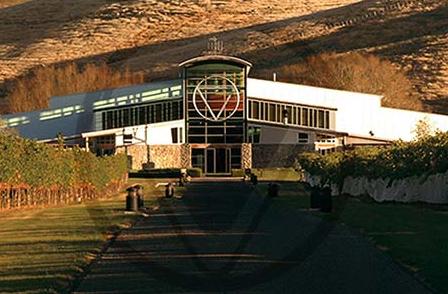 Ok. Bad joke. (I can't take full credit as one of my best friends, fellow foodie and wine lover actually fed it to me.) What can I say? Sometimes a little levity is needed!And it was Cinco de Mayo yesterday....
Mexico is actually the oldest wine producing country in the New World. Who knew? (Jancis Robinson and Hugh Johnson, apparently. There are two full columns dedicated to Mexico in their most recent edition of the World Atlas of Wine.) I was intrigued - but not surprised - to learn the Spaniards got the ball rolling in the 1500s; but there was a significant interruption in 1699 when "the King of Spain banned new vineyards in Mexico, fearing competition to Spain's wine industry, thus halting the development of a wine culture in Mexico for three centuries." Egad! 3 C's? No wonder no one really knows about Mexican wine - and the country is better known for tequila and refreshing cerveza.
Ok. Bad joke. (I can't take full credit as one of my best friends, fellow foodie and wine lover actually fed it to me.) What can I say? Sometimes a little levity is needed!And it was Cinco de Mayo yesterday....
Mexico is actually the oldest wine producing country in the New World. Who knew? (Jancis Robinson and Hugh Johnson, apparently. There are two full columns dedicated to Mexico in their most recent edition of the World Atlas of Wine.) I was intrigued - but not surprised - to learn the Spaniards got the ball rolling in the 1500s; but there was a significant interruption in 1699 when "the King of Spain banned new vineyards in Mexico, fearing competition to Spain's wine industry, thus halting the development of a wine culture in Mexico for three centuries." Egad! 3 C's? No wonder no one really knows about Mexican wine - and the country is better known for tequila and refreshing cerveza.
It wasn't until the 18th Century that vines started to get a little local love. Grenache, Carignan and even Pedro Ximenez (used in the production of a yummy, rich Sherry) varietals landed on the scene. Somehow, someway, "they" also figured out that Baja, Mexico was quintessential vine country, er... wine country. Only 10 miles from the Pacific Ocean, Baja has a terrific climate and mineral-rich soil ideal for viticulture. Today innovation seems to be setting in - albeit slowly.
If you caught the recent "Diary of a Foodie" episode on PBS, a work of Gourmet magazine, none of this is news to you. Rather, Casa de Piedra Winery is synonymous with innovative, tasty Mexican vino. Piedra plants a range of "uncommon" Mexican varietals and their philosophy is to keep yields small while employing a "simple technique". The episode reports they plant Grenache and Mission grapes for the reds, and Palomino for the whites. Further research on their website suggests their repertoire of varietals is much greater: Tempranillo, Merlot, Cabernet Sauvignon and Zinfandel are additional red varietals planted; Chenin Blanc, Riesling, Sauvignon Blanc and Semillon are some of the whites grown. That's certainly a diverse lot! I applaud their willingness to experiment.
Unfortunately I've never had the (dis?)pleasure of sipping on a Mexican wine offering. But by Robinson's account, while "Mexican tastes and drinking habits have long lagged behind the increasingly exciting achievements of Mexico's modern vineyards and wineries", they are worth checking out.
Are Mexican wines even available in your market? Have you had a chance to sample them?


 I hope you and yours had a wonderful time popping a cork or two last Saturday night for
I hope you and yours had a wonderful time popping a cork or two last Saturday night for %) and Cabernet Sauvignon (25%). My inspiration for the paprika braised chicken was distinct from the wine I knew I would have on offer, so decanting was a priority to soften any rough edges and remove the sediment the wine was likely to throw. Since I know my friend prefers fruit-forward wines to uber-dry ones, I hoped this wine would deliver a nice silky mouthfeel, with both red and black fruits apparent. Finally, given the region's proximity to the Priorat, I hoped it would have a gentle herbaceousness and a touch of earthy leather. I was pleased to discover it delivered on all of the above!
%) and Cabernet Sauvignon (25%). My inspiration for the paprika braised chicken was distinct from the wine I knew I would have on offer, so decanting was a priority to soften any rough edges and remove the sediment the wine was likely to throw. Since I know my friend prefers fruit-forward wines to uber-dry ones, I hoped this wine would deliver a nice silky mouthfeel, with both red and black fruits apparent. Finally, given the region's proximity to the Priorat, I hoped it would have a gentle herbaceousness and a touch of earthy leather. I was pleased to discover it delivered on all of the above! I first had the opportunity to vacation on the lovely (Turkish) Cyprus island two years ago when my friend invited me to stay with her family for a couple of weeks. Whether it was because Turkey is largely a Muslim nation or because my friend's parents don't imbibe very often, drinking wasn't a big part of that trip. I tried Raki once - a strong, clear brandy that tastes of anise - but was not a fan, as my nephew would say. I also remember trying a glass of red wine at a Beer Garden there and found it almost undrinkable. It was so acidic and unbalanced I was happy to stick with the thirst-quenching Effes beer that dominated nightspot venues.
This summer we were visiting for the same friend's wedding celebration and decided to spend a few days in Istanbul on the way. The first night we were there we saddled up to a local
I first had the opportunity to vacation on the lovely (Turkish) Cyprus island two years ago when my friend invited me to stay with her family for a couple of weeks. Whether it was because Turkey is largely a Muslim nation or because my friend's parents don't imbibe very often, drinking wasn't a big part of that trip. I tried Raki once - a strong, clear brandy that tastes of anise - but was not a fan, as my nephew would say. I also remember trying a glass of red wine at a Beer Garden there and found it almost undrinkable. It was so acidic and unbalanced I was happy to stick with the thirst-quenching Effes beer that dominated nightspot venues.
This summer we were visiting for the same friend's wedding celebration and decided to spend a few days in Istanbul on the way. The first night we were there we saddled up to a local  getaway, I sneakily packed a few wines in my Survival Kit that fit with this
getaway, I sneakily packed a few wines in my Survival Kit that fit with this